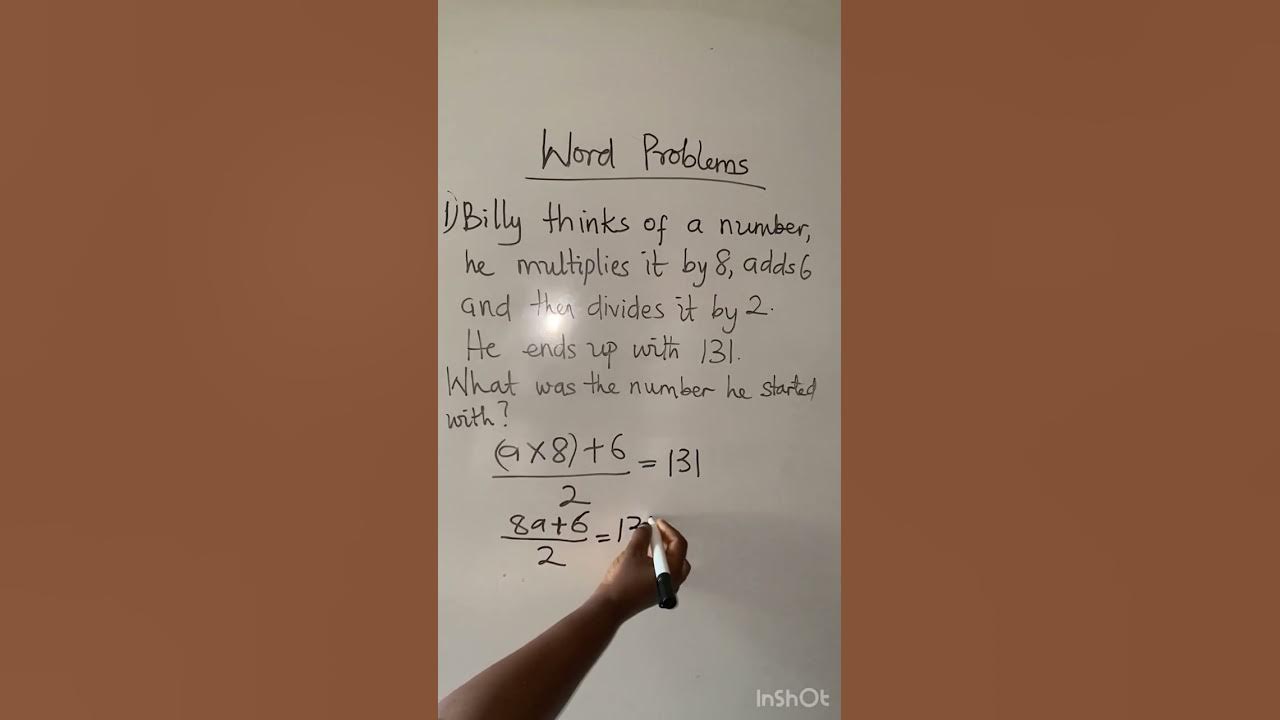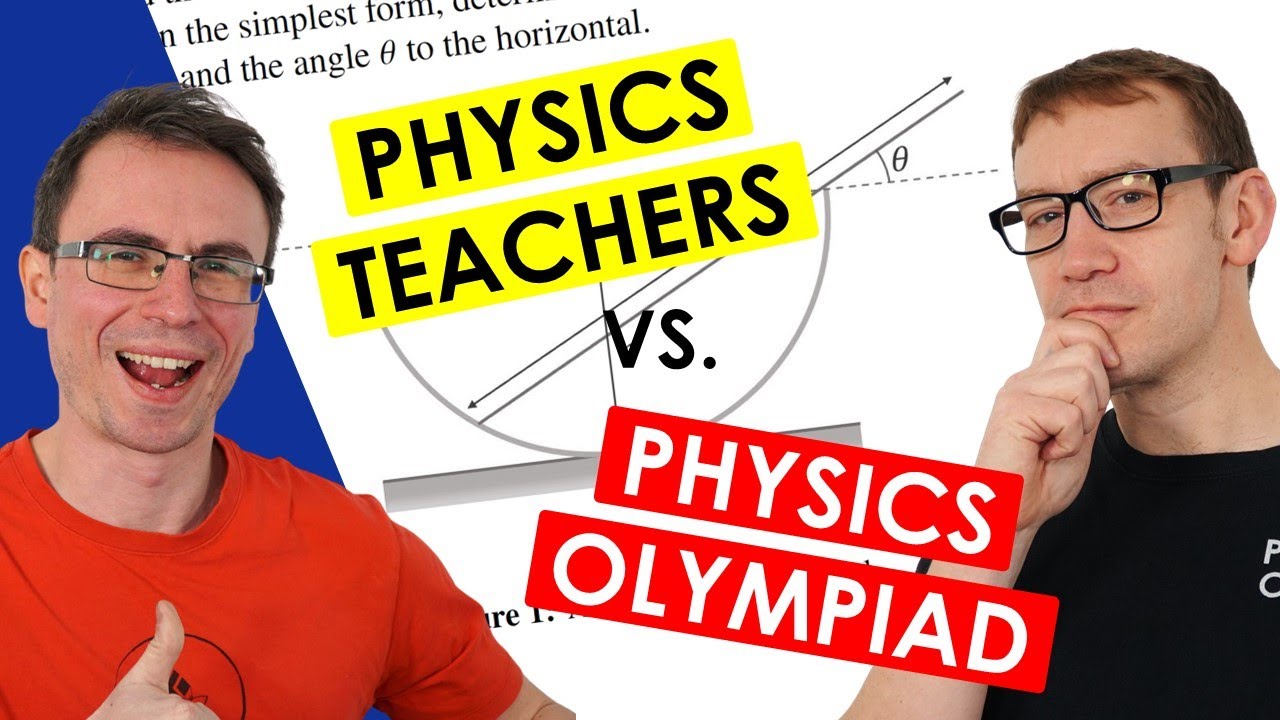I Tried One of the Hardest Exams in the World
TLDRIn this video, the presenter takes on the challenge of solving a question from the GE Advanced exam, renowned for its difficulty. The problem involves calculating the number density of particles in a gas orbiting a central mass under gravitational force. The presenter uses principles of physics and mathematics, including the kinetic energy of particles and gravitational force equations, to derive the number density as a function of radius. The solution process is reminiscent of the International Physics Olympiad, highlighting the complexity and educational value of such problems. The video promises more GE Advanced material in the future, encouraging viewers to stay tuned.
Takeaways
- 📚 The speaker attempted the GE Advanced exam, which is considered very challenging and is recommended by subscribers.
- 🧠 The exam contains a variety of questions with unusual solutions and involves physics and mathematics typically studied in the first year of university.
- 🚫 Negative marks are penalized with a negative score, which is a unique aspect of the exam.
- 🌌 The first question discussed involves particles in a gas orbiting a center under gravitational force, with the mass density depending on the distance from the center.
- 🔍 The kinetic energy of a single particle is given as 'k', and the mass of the particle as 'm'.
- 📈 The number density is defined as the density divided by the mass of a single particle.
- 🔧 The speaker uses the known kinetic energy and gravitational force equations to derive a relationship between mass, velocity, and radius.
- 📝 By differentiating the mass with respect to radius, the speaker finds an expression for the mass density as a function of radius.
- 🧩 The final step involves rearranging the derived equations to find the number density as a function of radius, which is a key part of solving the problem.
- 🏆 The speaker connects the problem to the International Physics Olympiad, suggesting that similar problems can enhance understanding of gravitational physics.
- 📹 The speaker promises to post more GE Advanced material in the future, indicating a commitment to exploring complex topics.
Q & A
What is the main focus of the video?
-The video focuses on solving a physics problem from what is described as one of the hardest exams in the world, likely the GE Advanced exam, involving concepts like kinetic energy, gravitational force, and number density.
What is the relationship between kinetic energy and velocity in the problem discussed?
-The relationship is given by the equation "(1/2)mv^2 = K", where "K" is the kinetic energy of a single particle, "m" is the mass, and "v" is the velocity.
How does the gravitational force relate to the centripetal force in this scenario?
-The gravitational force provides the centripetal force required for the particles to orbit around the center, described by the equation "mv^2/r = Gmm/r^2".
What is the expression derived for the mass in terms of kinetic energy, radius, and gravitational constant?
-The mass "m(r)" as a function of radius is derived as "m(r) = 2Kr/Gm", where "K" is kinetic energy, "r" is the radius, and "G" is the gravitational constant.
What mathematical technique is used to find the differential mass 'dm'?
-Differentiation is used to find the differential mass "dm", by differentiating the product of density "ρ" and the volume of a spherical shell.
What is the formula derived for the number density in the problem?
-The number density "n(r)" is derived as "n(r) = K/2πr^2Gm^2", where "K" is kinetic energy, "r" is the radius, "G" is the gravitational constant, and "m" is the mass of a single particle.
Why is it important to differentiate mass with respect to radius in this problem?
-Differentiating mass with respect to radius is crucial to find the relationship between mass and radius, which helps in deriving the expression for number density.
What type of questions does this problem resemble, according to the narrator?
-The problem resembles questions from the International Physics Olympiad, known for their complexity and requirement for a deep understanding of gravitational physics.
What kind of topics does the narrator mention are involved in the exam?
-The exam involves topics such as physics, particularly gravitational physics, and mathematics, including matrices.
What future content does the narrator plan to post?
-The narrator plans to post more material related to the GE Advanced exam in the future.
Outlines
🧠 Advanced Physics Exam: Gravitational Gas Dynamics
In this paragraph, the narrator embarks on tackling what they describe as 'probably the hardest exam in the world,' the 'ge advanced.' The exam is characterized by a variety of complex questions, some requiring unconventional solutions and advanced physics and mathematics knowledge, including matrices. The narrator is particularly concerned about the negative scoring system for incorrect answers. They begin by solving the first question, which involves calculating the number density of particles in a gravitational gas system. The problem requires an understanding of kinetic energy, gravitational force, and centripetal force. The narrator uses these concepts to derive an equation for mass density as a function of the radius and then differentiates to find the number density, which is the ratio of mass density to the mass of a single particle.
📚 Solving Gravitational Gas Dynamics: The Mathematical Approach
Continuing from the previous paragraph, the narrator provides a detailed mathematical solution to the problem of the gravitational gas system. They start by setting up equations based on the kinetic energy of a particle and the gravitational force acting as the centripetal force. After simplifying and rearranging the equations, they differentiate the mass density function with respect to the radius to find the differential mass 'dm'. The narrator then substitutes 'dm' back into the equation to find an expression for the density 'rho' as a function of the radius 'r'. They conclude by simplifying the equation to find the number density 'r', which is the ratio of the density to the mass of a single particle. The narrator also suggests that viewers should check out the International Physics Olympiad for further exploration into gravitational physics and hints at future content focusing on 'ge advanced' material.
Mindmap
Keywords
💡Kinetic Energy
💡Gravitational Force
💡Mass Density
💡Number Density
💡Centripetal Force
💡Differentiation
💡Radius (r)
💡Mathematical Re-arrangement
💡Negative Marking
💡Matrices
Highlights
Introduction to solving one of the hardest exams, GE Advanced, with a mix of physics and mathematics.
Emphasis on the unusual solutions and complex nature of the questions in the exam.
Explanation of kinetic energy for a single particle, represented as \( K = \frac{1}{2} mv^2 \).
Utilization of the relationship between centripetal force and gravitational force, \( \frac{mv^2}{r} = \frac{GmM}{r^2} \).
Deriving the mass \( M(r) \) as a function of radius using the equation \( M(r) = \frac{2Kr}{GM} \).
Introduction to differentiation for finding small changes in mass \( dM \) with respect to radius \( dr \).
Application of the concept of mass being the product of density and volume to differentiate mass.
Differentiating the volume \( \frac{4}{3}\pi r^3 \) to find the differential mass equation \( dM = \rho \times 4\pi r^2 dr \).
Simplifying the equation for differential mass to link it to kinetic energy and gravitational force.
Derivation of the mass density \( \rho \) equation as a function of radius, resulting in \( \rho(r) = \frac{K}{2\pi r^2 GM^2} \).
Final expression for the number density as \( n(r) = \frac{K}{2\pi r^2 GM^2} \).
Recognition that the final answer matches option A in the multiple-choice question.
Comparison to a similar question from the International Physics Olympiad, emphasizing the importance of understanding gravitational physics.
Encouragement to explore more GE Advanced material and further deepen the understanding of complex physics concepts.
A promise of future content focused on GE Advanced, aimed at helping students prepare for challenging physics exams.
Transcripts
Browse More Related Video
5.0 / 5 (0 votes)
Thanks for rating:





